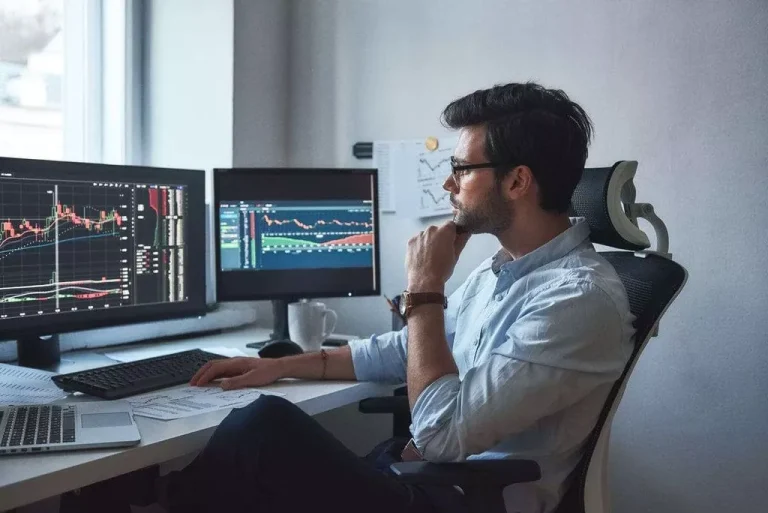Content
This technological piece executes orders placed by other market participants after scanning order books and finding suitable counterparts for each market position. In essence, the matching engine technology strives to find the best market price for each side of the trade. As such, it tries to find the highest prices for sellers and the lowest prices for buyers, finding a middle-ground between them. Technology, particularly https://www.xcritical.com/ the advent of electronic trading, has greatly enhanced the efficiency of the order-matching process.
Get in Touch With a Financial Advisor

It’s also useful for network and systems engineers who are making their first foray into Ethereum financial trading infrastructure. However, as you start serving more investors and accept more orders, your output will increase. Accordingly, you need scalable multi-asset matching engines that accommodate your changing needs. If your platform connects deep liquidity sources, orders are more likely to be matched and settled instantly.
Matching engines in 3 minutes: terminology guide for traders and developers

This scalability is vital for trading platforms anticipating increases in user numbers and trading activity, ensuring the crypto exchange matching engine engine can handle higher loads without compromising performance. Order matching is integral to the price discovery process in financial markets. As buy and sell orders are matched, the agreed-upon prices become the new market prices for the respective securities. Matching orders is a core mechanism that enables the smooth functioning of financial markets. It facilitates the process of price discovery, aids in maintaining liquidity, and ensures the fair execution of trades. High-frequency trading (HFT) strategies rely on the matching engine speed to execute trades in microseconds.
Performance Metrics: Latency and Throughput
Understanding how matching engines function is essential for anyone participating in financial markets, from traders to exchange operators. A matching engine is the cornerstone technology of financial exchanges, acting as the sophisticated engine room where buy and sell orders are paired. This software system is crucial for functioning equity, commodity, cryptocurrency exchanges, and derivatives markets. It processes and matches orders from market participants based on complex algorithms, thus enabling the seamless execution of trades.
An order book is a list of all the buy and sell orders that have been placed on a trading platform. It is a critical component of the matching engine, as it allows the matching engine to quickly and efficiently find matching orders. Adopting a FIFO-based matching engine minimises the wait time for orders and ensures orders are settled effectively. In contrast, a time-weighted average price method leads to more hang time, which can cause delays.
This is where the matching engine steps in, analyzing the landscape and connecting compatible orders. While this basic underlying principle sounds simple, the actual process is incredibly high-speed and complex. The matching engine works under intense pressure, often handling and processing thousands of orders every second with impeccable accuracy and fairness. Each order includes specific details, such as the type of asset (like a stock, commodity, or cryptocurrency), the volume, and the price at which they wish to buy or sell. To prioritise reliability, a replicated system design is adopted where multiple instances of gateways, matching engines, and databases run simultaneously.

Asset class – Understanding the asset classes your trading venue will offer is crucial, as not all OMEs are compatible with every class. However, multi-asset engines are independent of underlying assets, making them suitable for most markets. An order-matching engine architecture uses various criteria to match orders, including price and time, order type, and trading venue.
Ensuring that a matching engine complies with all relevant laws and regulations can be challenging, particularly in regions with stringent financial oversight. An electronic list of outstanding buy and sell orders for a specific asset on an exchange or marketplace. Taker orders remove liquidity from the market by matching with maker orders. For example, if you place an order for 100 ABC, and %60 of order is matched, your order will be a maker for the %60 that were matched.
- Exchanges and marketplaces provide a venue for market players to swap stocks, digital currencies, commodities, and other investment options.
- This means that if two orders are pending at the same time and price, the one with a larger traded quantity will be executed first.
- This manual process used to take so long and can involve human errors, which, in most cases, is frustrating.
- As buy and sell orders are matched, the agreed-upon prices become the new market prices for the respective securities.
- To prioritise reliability, a replicated system design is adopted where multiple instances of gateways, matching engines, and databases run simultaneously.
- This innovation not only simplifies operations but also reduces operational costs.
All other exchange systems can be regarded as peripheral to the matching engine because without it there is effectively no market to speak of. Matching engines offer numerous advantages in trading, benefiting traders, liquidity providers, and financial exchanges alike. Traders enter their intentions to buy or sell, recording them in the order book.
In contrast to FIFO, the LIFO approach serves the last arrival in the queue. This method ensures rapid execution in quickly changing markets or sentiments. Serving the last arrival ensures settling orders with the most recent price and liquidity update. The order book compiles all pending orders by price level and asset type, which gets updated in real time as more orders are processed. This can occur due to reasons such as insufficient market liquidity or technological glitches.
This improvement introduced an era where anyone can trade virtually any asset from the comfort of their home. While a centralized engine is susceptible to attacks due to its reliance on a central server, a decentralized engine, operating on a distributed network, offers more resilience against potential breaches. Market indicators are best defined as quantitative tools used by investors or traders to provide an approximation of what’s in store for future market movement. Exchanges must also be designed to handle sudden surges in trading activity, such as those seen during “black swan” events or market movements driven by social media. In previous times, trading used to happen over the telephone, using paper and pen or simple computer programs to list and find pending orders.
The ability to process orders rapidly is crucial, especially in a landscape where every millisecond counts. This model incentivizes market participants to provide liquidity (maker) or take liquidity away (taker). Makers who add orders to the order book are often provided with rebates or reduced fees. In contrast, takers who remove liquidity by matching existing orders might pay a higher fee. This system encourages more trading and liquidity, which is vital for the overall health of the marketplace. Exchange venues often have to fulfill extensive reporting obligations, necessitating a system that stores event histories without impairing performance.
Also known as FIFO (first in, first out), the oldest order at a particular price level will be prioritized in this ruleset over newer orders at the same price. We’ve already discussed the order book, which is one of the main parts of a matching engine. At the heart of it all we have the matching algorithm, which performs most of the heavy lifting when it comes to order execution. Each algorithm serves different purposes and is chosen based on the specific needs of the trading platform and market conditions.
In this environment, the matching engine must be capable of processing vast amounts of data in real-time, enabling traders to capitalize on minute price movements. Just like you can tell from the name, a trade matching engine matches buy and sell orders performed in an electronic trading network. Modern markets are powered by trade matching engines and order matching systems. Electronic trade has significantly matured, and floor trading has become a thing of the past.
While they contribute to a more secure trading environment, they might sacrifice some speed and efficiency compared to their centralized counterparts. The absence of a central server minimizes the risk of breaches, making them a safer alternative. A matching engine must incorporate robust security measures to safeguard against data breaches, unauthorized access, and cyber-attacks. These measures may include advanced encryption protocols, regular security audits, and compliance with international cybersecurity standards. The financial implications of downtime can be significant, not just in terms of lost trading opportunities but also in the potential damage to the platform’s reputation.


